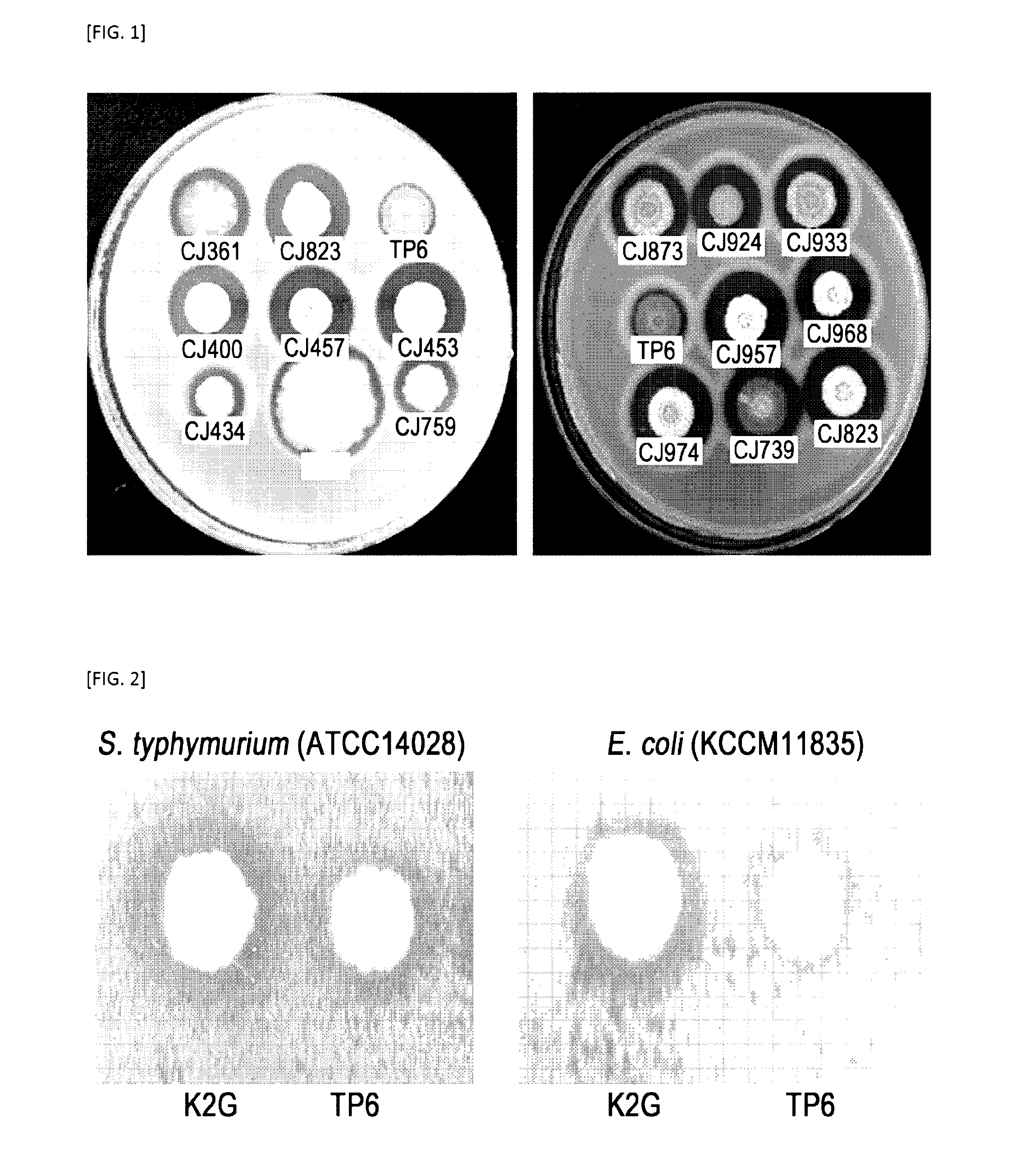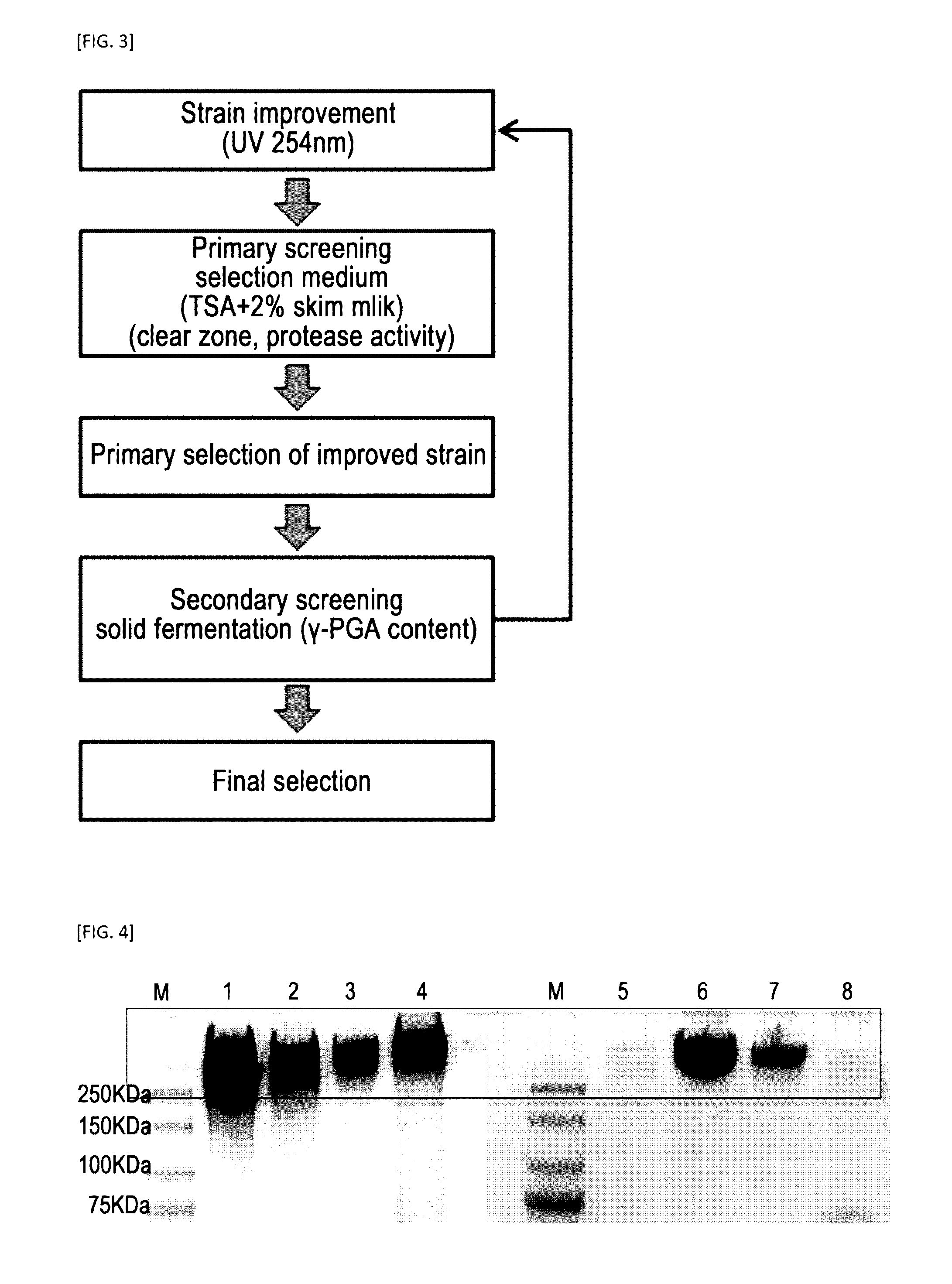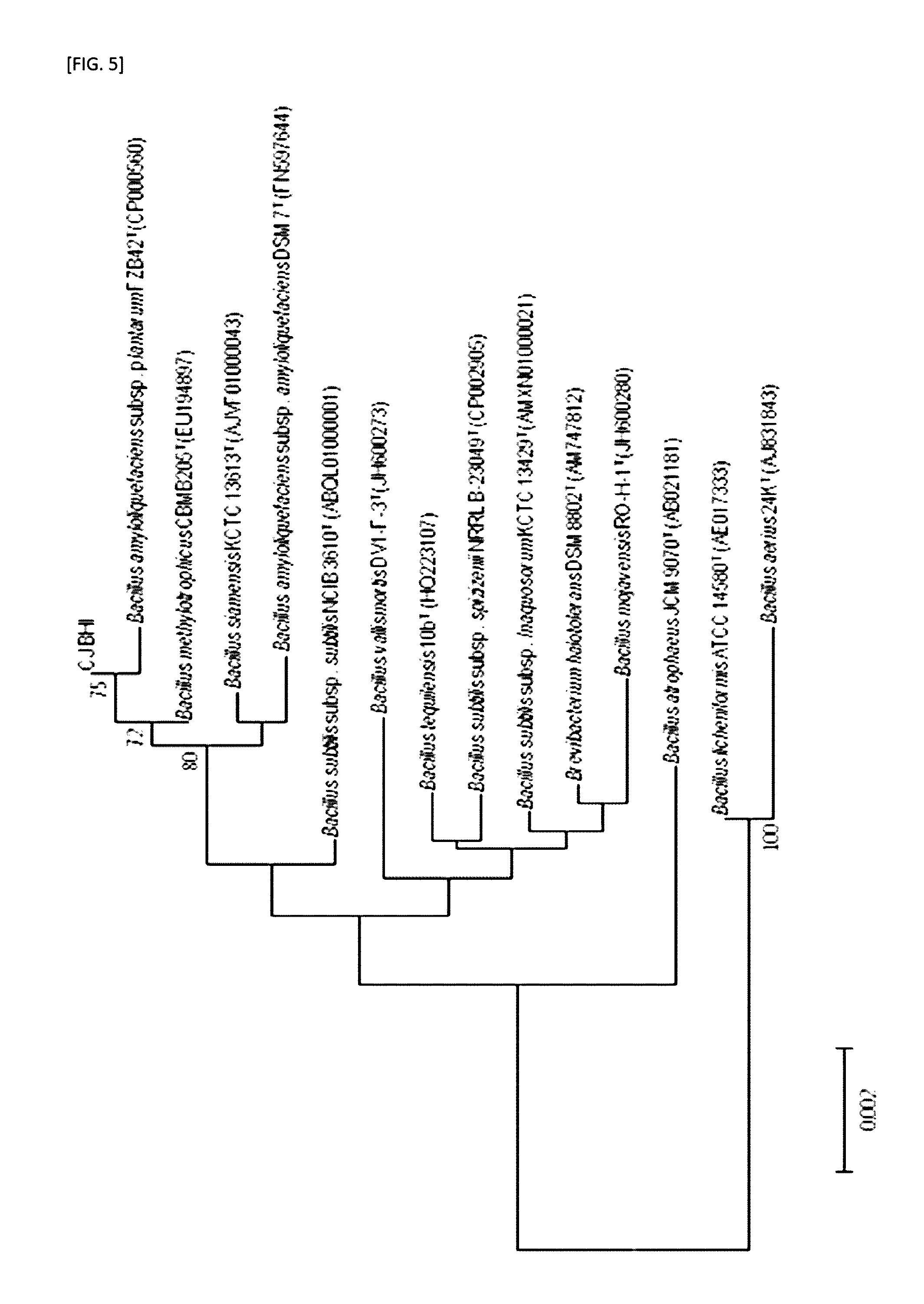Bacillus sp. strain with imporived productivity of fermented soybean meal and method for producin fermented soybean meal using the same
a technology of soybean meal and bacillus sp., which is applied in the direction of microorganisms, biochemical equipment and processes, and bacteria based processes, can solve the problems of reducing the availability of total protein, restricting the use of soybean meal in feed for young livestock, and affecting the productivity of fermented soybean meal, etc., to achieve the removal of anti-nutritional factors, reduce the productivity of viscous substances, and improve digestion and absorption rates.
- Summary
- Abstract
- Description
- Claims
- Application Information
AI Technical Summary
Benefits of technology
Problems solved by technology
Method used
Image
Examples
example 1
Selection of Strains Having High Protease Productivity
[0088]In order to isolate strains having excellent protease productivity, the present inventors isolated approximately 3000 kinds of microorganisms from a variety of traditional fermented foods (kimchi, fermented bean paste, traditional folk wine, salted fish, etc.), and of them, approximately 1300 kinds of feed adaptable (Korea Feed Ingredients Association, probiotics) Bacillus strains were identified. From the strains, it was intended to find multifunctional strains having high protease expression, an antimicrobial activity and a rapid growth rate.
[0089]In detail, selection of strains having high protease productivity was performed by comparing the size of clear zone which was formed due to degradation of substrate on 2%(w / v) skim milk (Difco, USA)-containing YM agar plate (yeast extract 3.0 g, malt extract 3.0 g, peptone 10.0 g, agar 20.0 g) (FIG. 1).
[0090]The strains having high protease productivity thus selected were inocul...
example 2
Isolation of Strains Having Inhibitory Activity on Proliferation of Pathogen
[0093]In order to isolate strains capable of inhibiting growth or proliferation of E. coli and Salmonella which are the representative pathogens causing food poisoning in livestock and to develop Salmonella-free non-toxic products by applying the strains in the production of fermented soybean meal, 14 kinds of the strains having high protease productivity which were isolated in Example 1 were subjected to measurement of the antimicrobial activity against pathogens.
[0094]The antimicrobial activity against pathogens was measured by spot-on-the-lawn test on Salmonella typhymurium (ATCC14028) and E. coli (KCCM11835).
[0095]In detail, 14 kinds of the strains having high protease productivity were inoculated in GYP medium (glucose 10.0 g, yeast extract 8.0 g, polypeptone 2.0 g, pH 7.0), respectively, followed by liquid-culture at 37° C. and 180 rpm for 12 hours. Each 1.5 μl of the culture broths of the strains havi...
example 3
Test for Application of Salmonella Proliferation-Inhibiting Soybean Meal
[0098]According to the results of Example 2, CJ823 on the agar plate showed excellent antimicrobial activity against Salmonella. However, the following experiment was performed in order to confirm whether the strain also exhibited the proliferation-inhibiting ability against Salmonella during practical fermentation of the soybean meal.
[0099]In detail, both CJ823 and Salmonella typhymurium ATCC14028 were inoculated into soybean meal (moisture content of 45%) which was steamed at 100° C. for 30 minutes, at a density of 4.5×107 CFU / g and 1.0×103 CFU / g, respectively and changes in the number of cells were examined at 37° C. and constant humidity for 24 hours. At this time, Salmonella typhymurium was singly inoculated into soybean meal, which was used as a control group. The mixture of Salmonella typhymurium and Bacillus subtilis TP6 was inoculated into soybean meal, which was used as a comparison group.
[0100]The str...
PUM
 Login to View More
Login to View More Abstract
Description
Claims
Application Information
 Login to View More
Login to View More - R&D
- Intellectual Property
- Life Sciences
- Materials
- Tech Scout
- Unparalleled Data Quality
- Higher Quality Content
- 60% Fewer Hallucinations
Browse by: Latest US Patents, China's latest patents, Technical Efficacy Thesaurus, Application Domain, Technology Topic, Popular Technical Reports.
© 2025 PatSnap. All rights reserved.Legal|Privacy policy|Modern Slavery Act Transparency Statement|Sitemap|About US| Contact US: help@patsnap.com



